Tim-D-AmazonBookPubl Misc 2 to 3
Tim-D-AmazonBookPubl Misc 2 to 3 - Part 1









The narrator discusses publishing physical paperback books in addition to ebooks. He notes that while ebooks are easy to self-publish, paperbacks require more work but unlock a much bigger market. Some key points:
- Before, self-publishing physical books was expensive and impractical, but new print-on-demand technology through Amazon allows printing one book at a time cost-efficiently.
- You don't need to store inventory or make a large upfront investment. Books are printed when ordered so costs scale with sales.
- However, you must price paperbacks higher than ebooks to account for shipping costs and Amazon's 40% cut versus 30% for ebooks.
- Surprisingly, 75% of book sales are still physical while only 25% are ebooks. So offering print books unlocks a much bigger potential market.
- The cover template differs for print books since they are 3D. Spines vary by page count. This requires some special consideration.
Overall the key point is that self-publishing physical books is now viable for individuals and crucial to tap the full sales potential versus ebooks alone.
.Tim-D-AmazonBookPubl Misc 2 to 3 - Part 2

















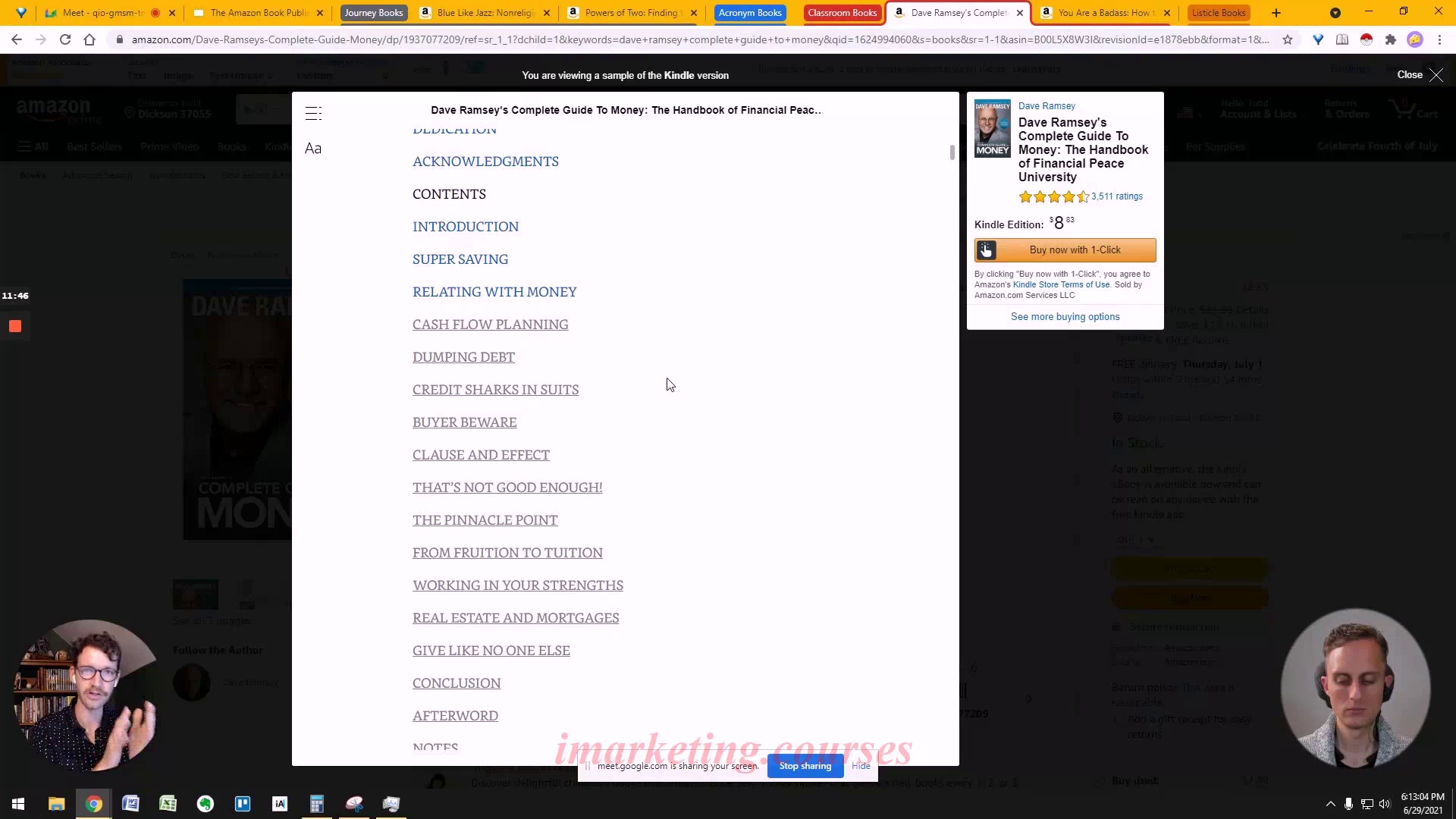


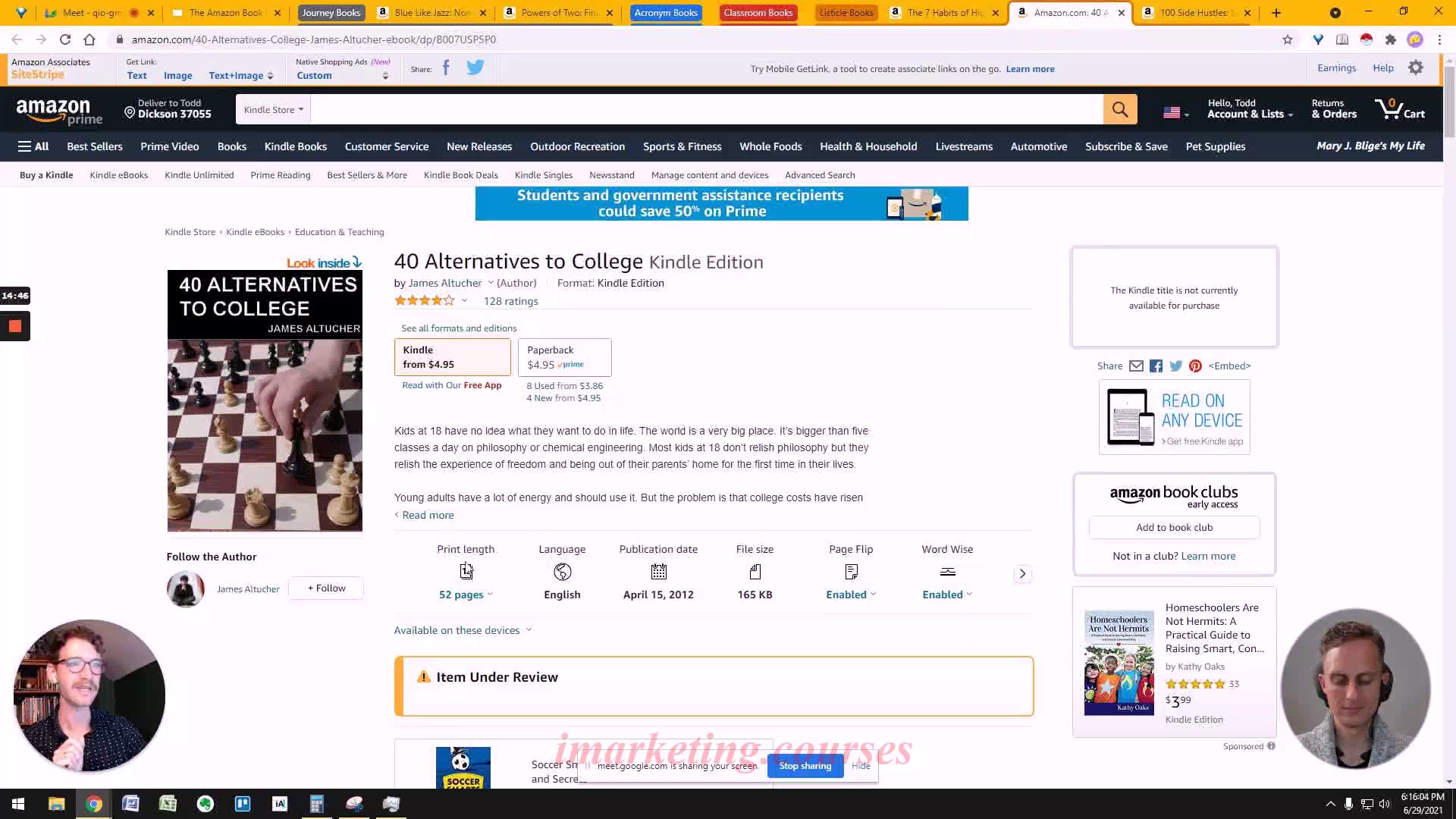
The Journey - A book that takes the reader chronologically from beginning to end, like a memoir or non-fiction book documenting the evolution of something over time. Examples given were Blue Like Jazz and Powers of Two.
The Acronym - Using an acronym to structure ideas in a memorable way. Examples were Decisive by the Heath brothers using the acronym RAP and Made to Stick by the same authors using the acronym SUCCESS.
The Classroom - Teaching a topic from beginning to end in logical order. Examples were financial books by Dave Ramsey and the self-help book You Are a Badass.
The Listicle - Organizing ideas into a list. Examples were The 7 Habits of Highly Effective People by Stephen Covey, 40 Alternatives to College by James Altucher, and 100 Side Hustles.
.Tim-D-AmazonBookPubl Misc 2 to 3 - Part 3































The narrator observes that many people have ideas for books but don't write them because they don't know how. When people try to write books, they often run out of ideas after the first chapter or two and the book dies.
The narrator wants to prevent this problem by having writers brainstorm all their ideas first before trying to write the book. He demonstrates this by brainstorming over 50 ideas for a book on self-publishing. Some ideas are nonsensical but it's part of the creative process.
The narrator challenges listeners to brainstorm at least 30 ideas for their book, preferably 50-75. He provides some techniques for overcoming writer's block. The next step after brainstorming is to cut down the ideas into an outline.
.Tim-D-AmazonBookPubl Misc 2 to 3 - Part 4


































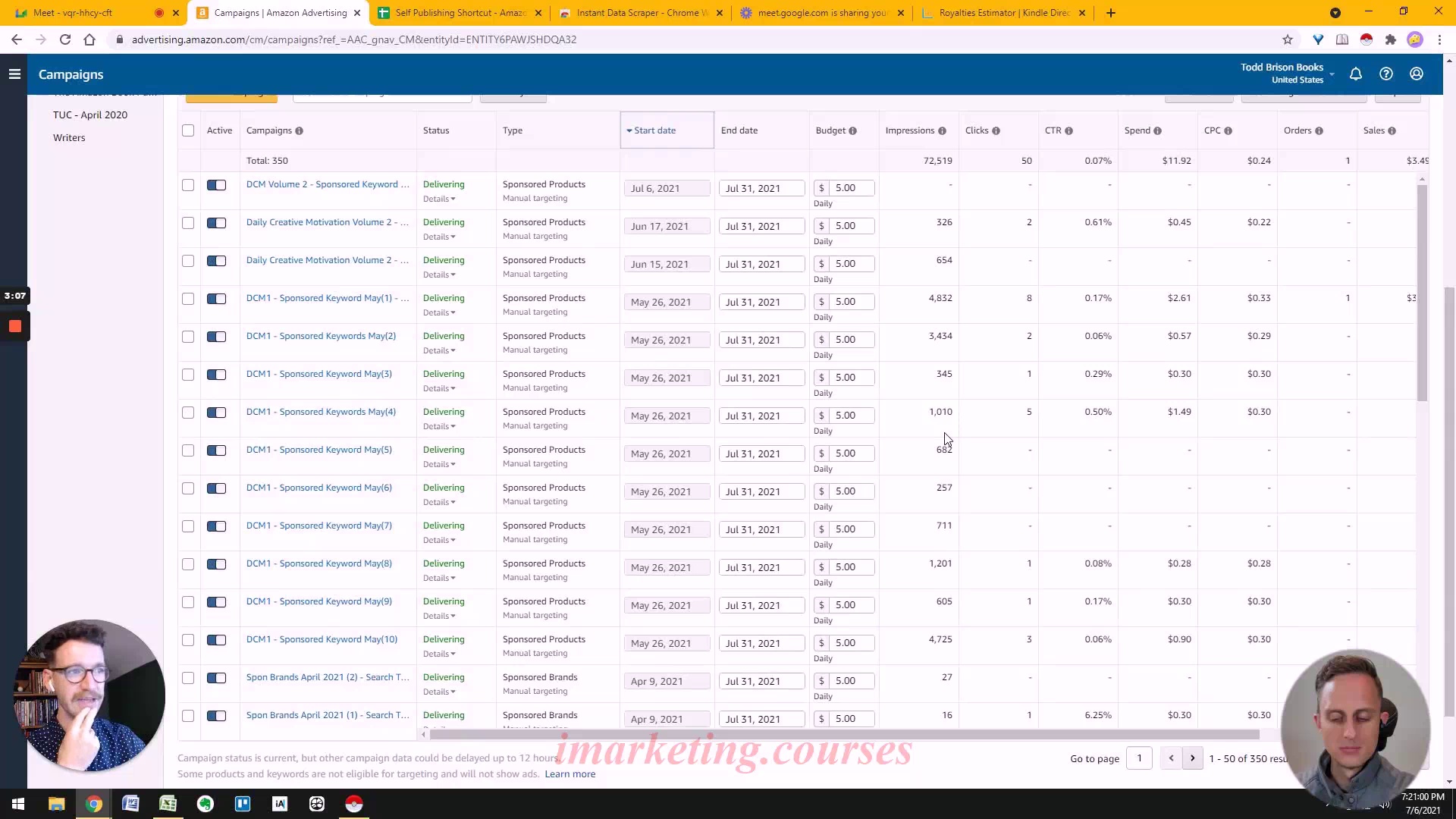










The narrator says to diagnose potential ad problems, look at impressions per day - aim for 500-1,000. If lower, start more ads with different keywords instead of tweaking existing ads. Keep collecting more keywords and making more ads. More keywords equals more book sales. Amazon doesn't want to spend your money, it wants relevant keywords. Spend time adding keywords rather than promoting yourself elsewhere.
Do not trust Amazon's dashboard data - it is dishonest and broken. The only accurate data is money in and out of your bank account. Watch your ad spend and book royalties. Check data weekly and start 5 more ads each time. Keep running profitable ads forever by adding more keywords and creating more ads.
The main takeaways: Do not trust Amazon's data, only your bank account data. Keep adding more keywords which adds more ads over time to generate more book sales.
.Tim-D-AmazonBookPubl Misc 2 to 3 - Part 5













































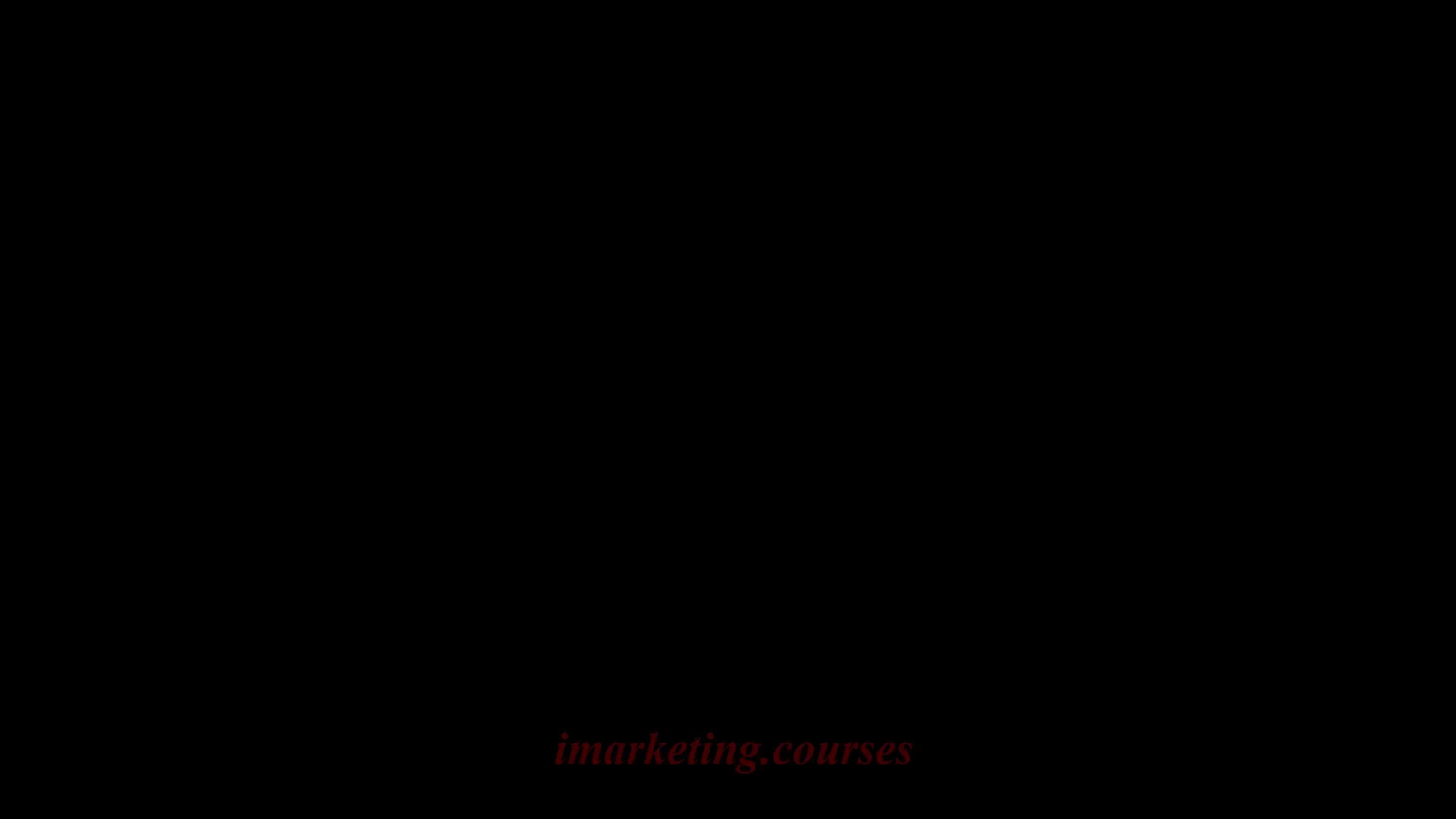
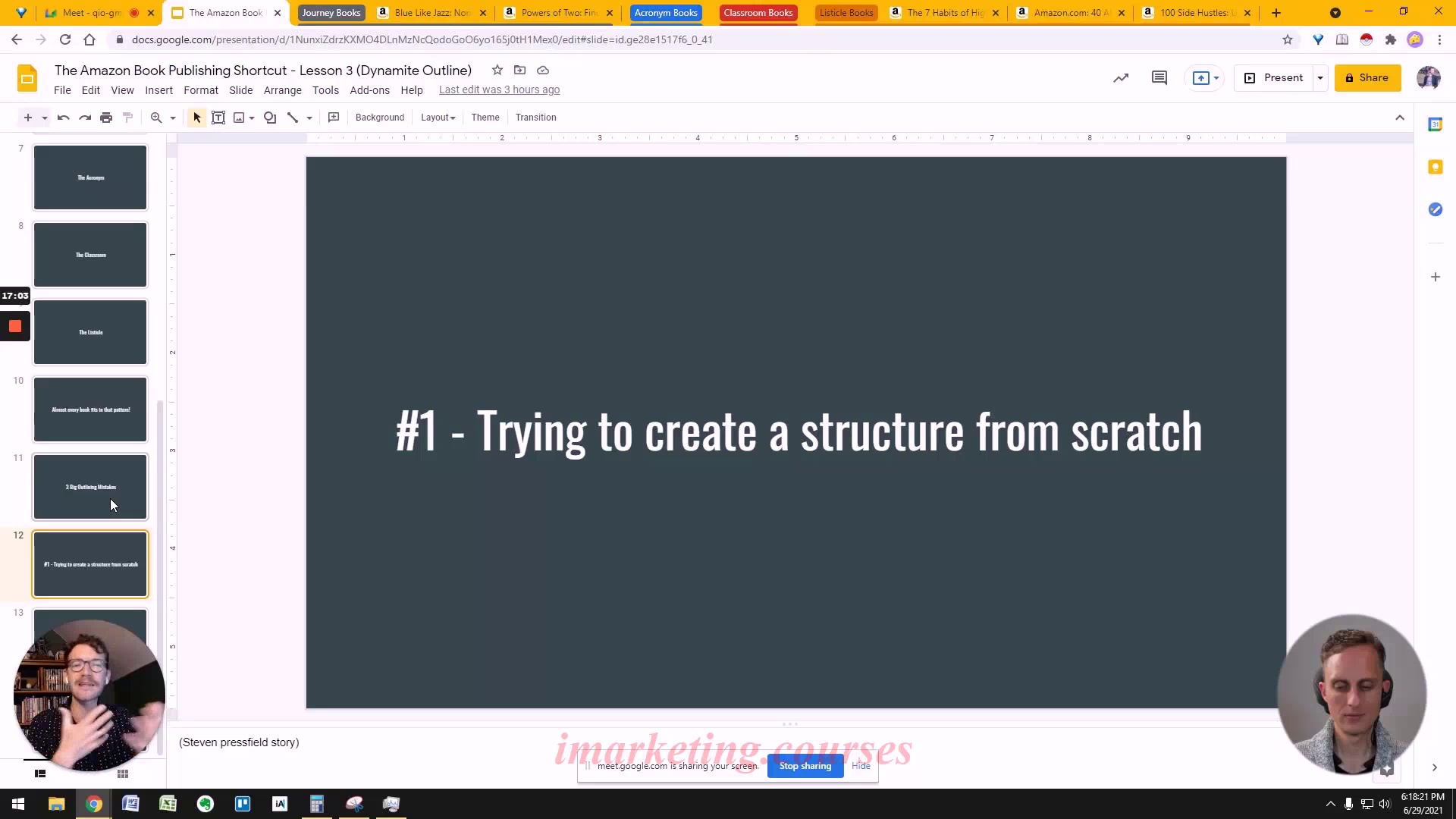


Steven Pressfield openly admitted to using Harper Lee's narrative structure from "To Kill a Mockingbird" in his own fiction book. As the narrator says, there is no need to create an outline structure from scratch when there are already effective templates available.
The second mistake is using intriguing chapter titles instead of clear chapter purposes in an outline. Cryptic chapter titles may grab interest initially, but make it harder to organize a large amount of text. Clear chapter purposes help guide the writing process better.
Finally, outlines should act as flexible guidelines, not strict rules. Plans often need to change during the writing process. The outline evolves as the work develops through continuous iterations of writing and editing.
.